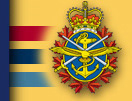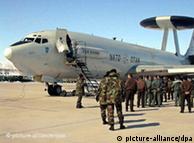As longtime readers will recall, I've been
touched personally by the
issue of
depression and suicide in the military a number of times. It never gets any easier talking about it, but talk about it we must if we're ever to beat back that particularly insidious demon.
Christie Blatchford and her G&M colleague Jessica Leeder have written what I believe is
a serious and fair piece on the recent self-inflicted death of Maj Michelle Mendes. And
BruceR at Flit has said what I would have liked to if I'd gotten to it first. Of course, being Bruce, he's said it better than I would have.
So why am I weighing in? Well, I have a few points to add.
First, Bruce's spot-on observation here bears repeating:
Every Canadian soldier in Kandahar Air Field and outside the wire goes to bed with a firearm and ammunition close to hand, and no one is immune to morbid impulse. Self-destructive actions that would take greater forethought and planning in accomplishing in a civilian setting are REAL easy overseas. Given that, Canadians should continue to be impressed with what I would still say is a surprisingly low rate of suicide on overseas deployments.
I know people here in Canada who would not be living full and happy lives had their bout with depression come during an overseas tour with the CF. I'm one of those people. Carrying a weapon and live ammunition makes it far too easy to successfully undertake a suicide attempt.
Second, everyone I've spoken to in the intelligence trade - including a couple of folks I bumped into on my trip to Kandahar - confirms and reinforces what Bruce has to say about the level of pressure in an undermanned Intelligence branch right now. It used to be that Int - along with Public Affairs, Admin, and to some degree Logistics - was the final career resting place for officers who had washed out of their original classification. They went into this COIN war in Kandahar with that cadre, that structure. And their branch was unprepared professionally for the demands the war has placed upon them, which has caused people problems.
Now, that's not to say that all Int specialists are also-rans, because there are a lot of good, solid people in the trade. And it's not to say the branch is even the primary architect of its own woes, because for the longest time it was an extremely undervalued and under-resourced corner of the CF.
But whatever the reasons that got us here, the Forces are right now faced with a huge need for top-level intelligence personnel, and not a lot of structure to train and field it. That needs to change. The silver lining is that some of the people currently being thrown into the deep end are showing themselves to be exceptionally strong swimmers, and they'll be in a good position to pass along the hard-won lessons of their experience to the next generation...if we can keep them that long and give them the opportunity.
The wrenchingly sad part is that some being thrown into that deep end are drowning, too.
Third, it's very difficult to explain to people what it's like to live with huge expectations in the CF when you're not quite ready for it. I don't just mean the expectations of the those in charge of you, either: it's your family and friends, your coaches and teachers, your mentors and those you look up to, all those who see you perform at a high level and assume you can always do that. Most difficult of all is the pressure of not letting your peers down. They're more than just friends and colleagues, they're brothers and sisters to you. And running with that pack - the most gripped, crazy, intense, loveable group of high-achievers you've ever had the good fortune to be associated with - is intoxicating and addictive. You push yourself to keep up even when you shouldn't, even when you're hanging on by your fingernails emotionally.
And when you crash, you crash hard. Worst of all, you
know that once you've crashed, there's no going back: you're now the one who couldn't quite cut it. It's not always a correct perception, especially in today's CF, but when you're in that moment, you
know you've just blown everything you care about, for good. And when you're convinced you've lost it, you want to escape: from yourself as much as from everyone around you.
I cringed when I read the Globe's description of Maj Mendes' career path. I cringed because, while our situations were undoubtedly very different, I can identify with how she got to such a dark and desperate place. And as someone who luckily didn't have such a simple way out of this life readily at hand, as someone who's come back from depression and built what really is a blessed existence out of my second chance, I wish I could have been there with her in that room in Kandahar and said "The only mistake you can't ever recover from is the one you're about to make. Trust me, I've been there and I know from personal experience that you can hit bottom and bounce instead of break. I've done it, and you can too."
My most heartfelt condolences go out to her friends and family.
Update: From a correspondent...
Your post today has literally brought me to tears. I have lived for many years with the stigma of how I failed my regiment, my family and myself through depression and maniac paranoid behavior. As a former infantry Captain I live every day with the stigma of failure and the difficulty of always wondering what if...
Help is a lot easier to obtain today than it was 20 years ago but there are still strong feelings of failure when an officer seeks it out. Thank you very much for your intelligent and informed discussion and viewpoints. It all helps to know that while each situation is different there is someone out there who is trying to educate and understand.
No, thank
you: it's responses like that that keep me writing, especially on such a difficult topic.
Depression thrives in the dark. We need to keep talking about it.
Upperdate: A CF
compilation of stats and facts surrounding suicide in our military.





![[Queen's Maritime color]](http://flagspot.net/images/c/ca%5Emarcm.gif)
















